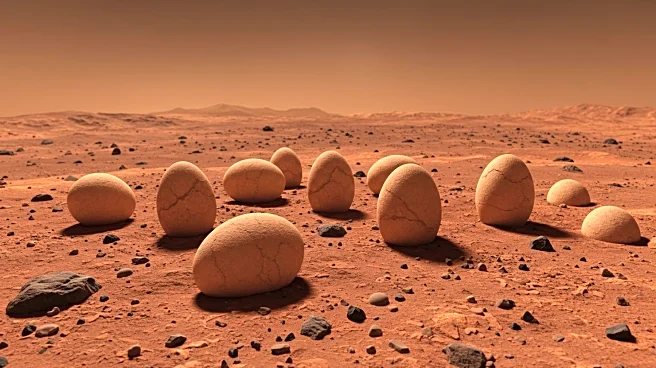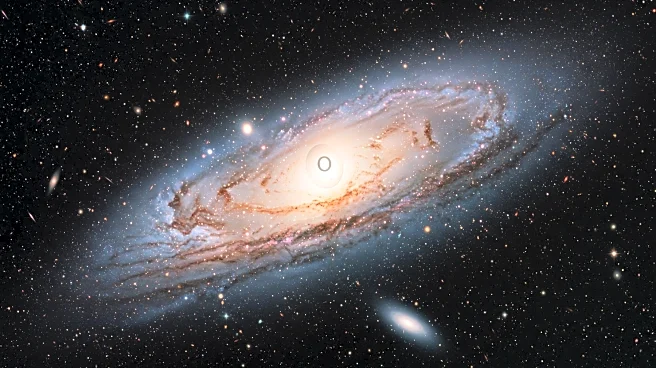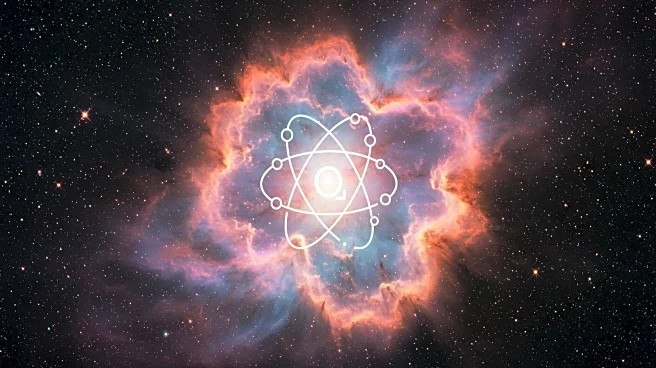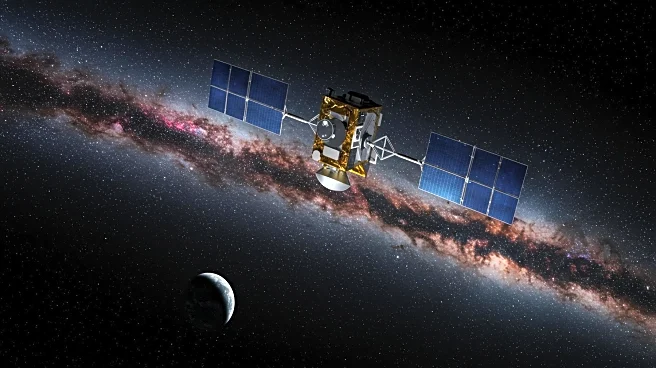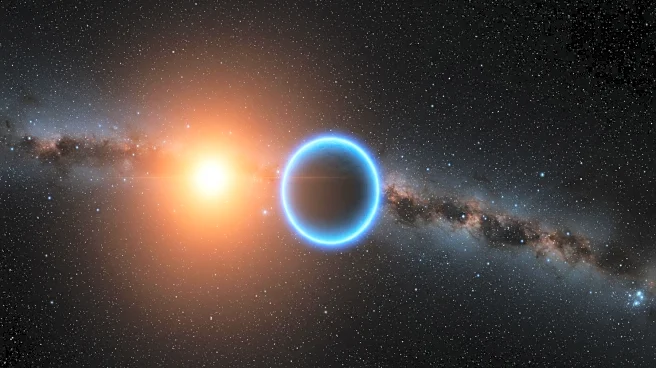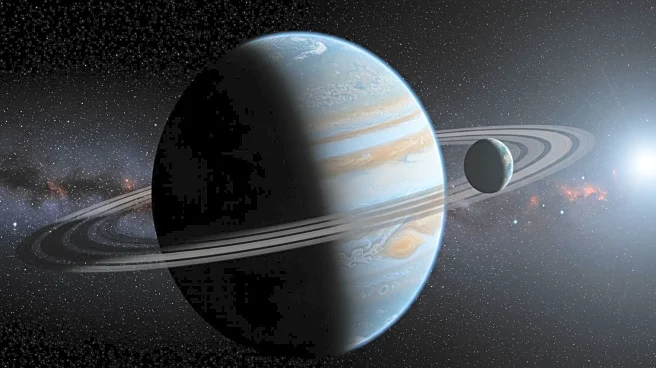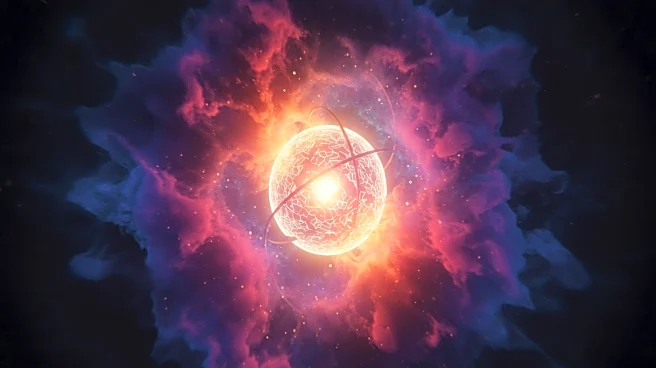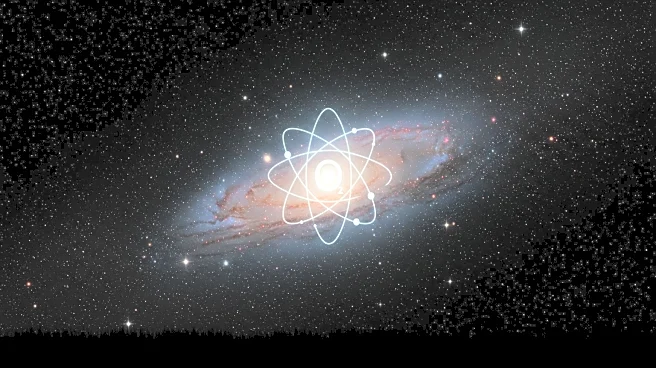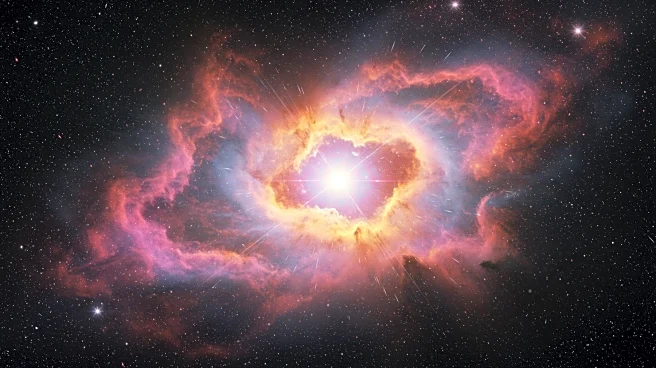Rapid Read • 7 min read
Astrochemists have detected molecules capable of forming precursors to sugars and amino acids in the disk of dust and gas surrounding a newborn star, V883 Orionis, located 1,350 light-years away. Using the Atacama Large Millimeter/submillimeter Array (ALMA) in Chile, the team led by MPIA astronomer Abubakar Fadul identified at least 17 complex organic molecules, including ethylene glycol and glycolonitrile. These findings suggest that protoplanetary disks inherit complex molecules from earlier stages, filling an evolutionary gap between pre- and post-stellar disk biochemistry. The molecules are believed to have formed on ice grains in the molecular cloud, which then clumped together, forming icy objects with the molecules locked inside. As the star grew, its heat sublimated the ice, releasing the molecules into the disk.
AD
This discovery is significant as it provides insight into the chemical processes that may lead to the formation of life-supporting molecules in space, even before planets are formed. Understanding the presence and formation of these molecules in protoplanetary disks can help scientists trace the origins of life and the conditions necessary for life to develop on planets. The research highlights the potential for complex organic chemistry to occur in space, suggesting that the building blocks of life may be more common in the universe than previously thought. This could have implications for the search for extraterrestrial life and the study of planetary formation.
The researchers plan to conduct higher resolution observations at longer wavelengths to confirm the presence of the detected molecules and identify new ones. They are particularly interested in finding molecules containing nitrogen, which were low in the ALMA data. Exploring other regions of the electromagnetic spectrum may reveal more evolved molecules, furthering our understanding of the chemical enrichment process from interstellar clouds to planetary systems.
AD
More Stories You Might Enjoy
